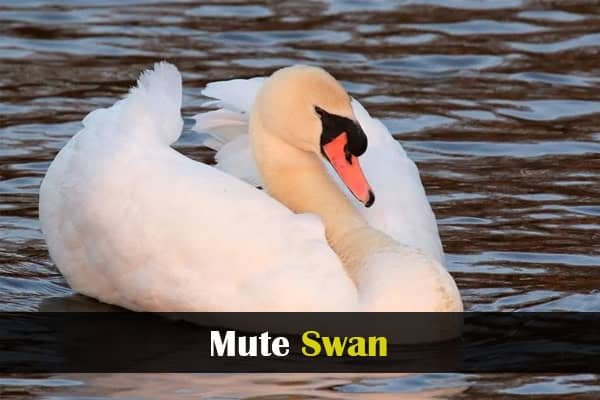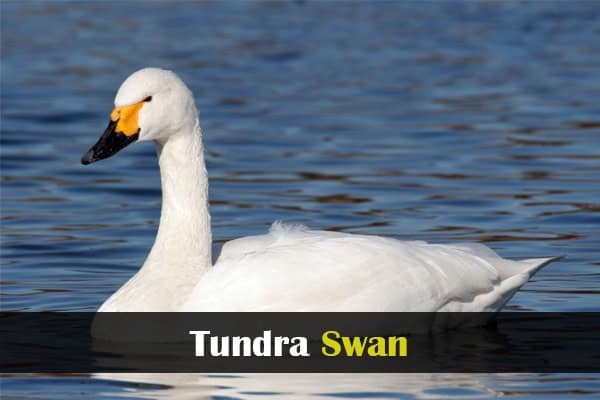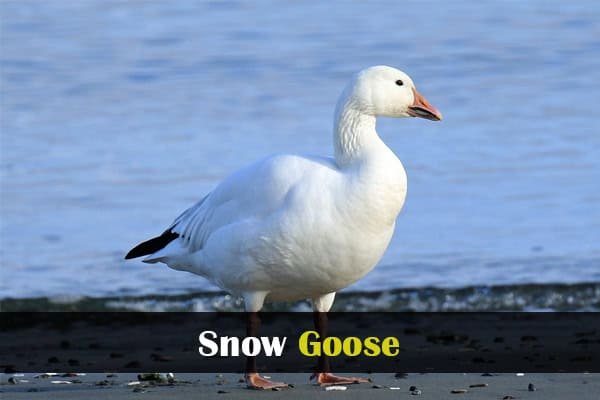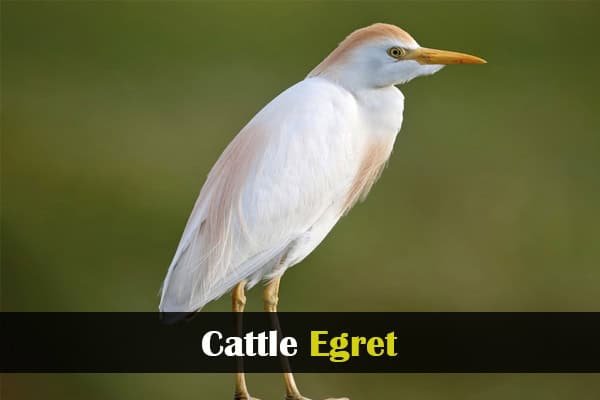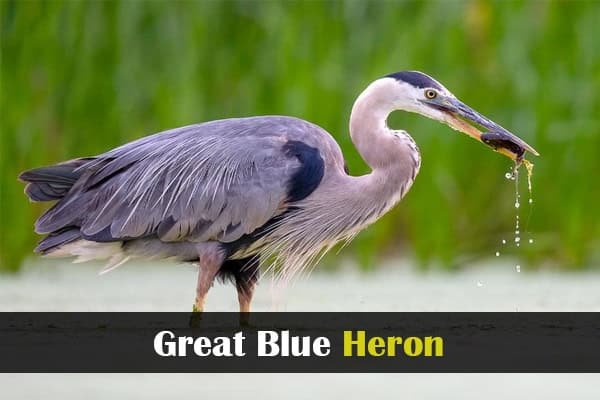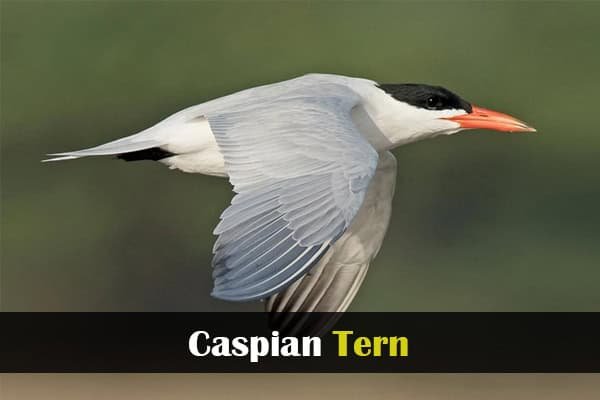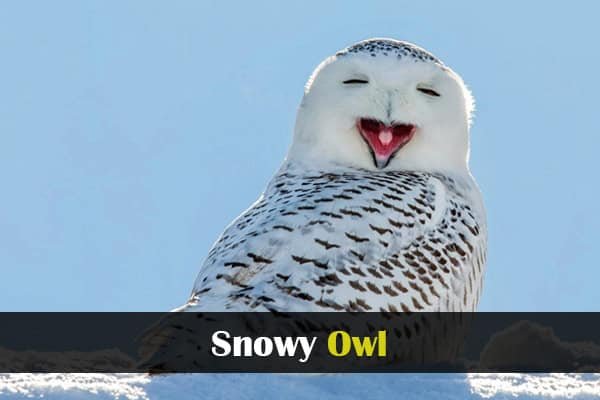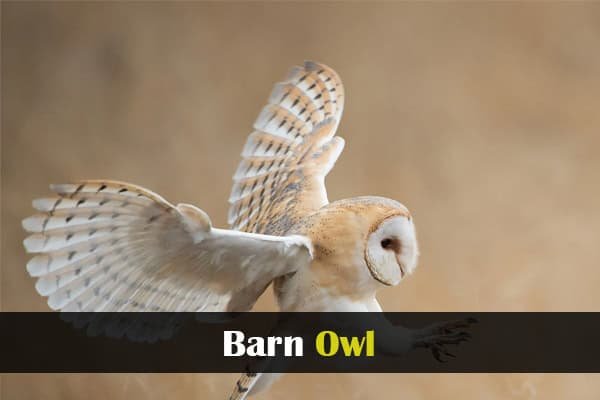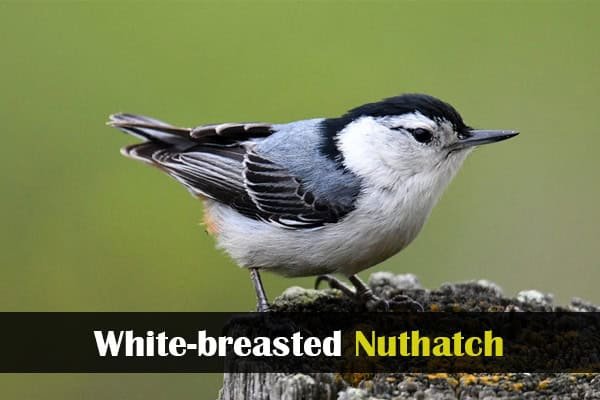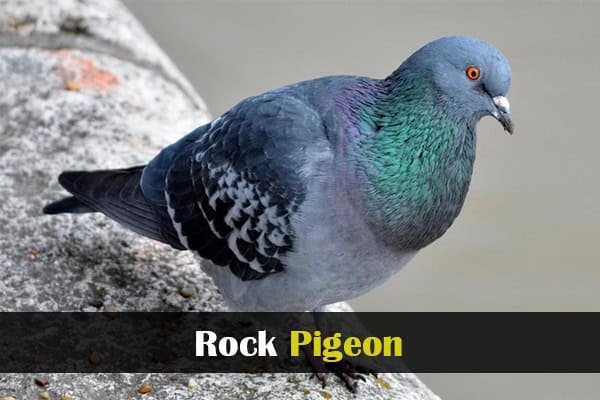Did you know Michigan is home to many white bird species? You can see everything from majestic waterbirds to elegant Songbirds. They are a diverse group of small birds known for their beautiful melodies.. The state’s different landscapes support a wide variety of birds.
When you visit Michigan, you’ll find lots of bird-watching spots. Its location on bird migration paths means you can see many birds, including those with beautiful white feathers.
The Michigan Bird Records Committee tracks the state’s bird species. They give us important information on where and how many birds are found. In this article, we’ll look at 16 white bird species in Michigan. We’ll also include pictures to help you identify them.
Discovering White Birds In Michigan
Exploring Michigan’s natural beauty reveals many white birds that live here. The state’s varied landscapes, from wetlands to Great Lakes shores, are perfect for these birds.
Michigan’s Diverse Bird Habitats
Michigan’s geography is unique, with lots of shoreline along the Great Lakes and many inland lakes. It also has different wetland ecosystems. These places are home to many white bird species.
The state’s wetlands are key for waterfowl like swans and geese, and shorelines attract gulls and terns. This mix of habitats makes Michigan special for seeing white birds in nature.
The varied landscapes support different bird habitats. From the north’s tundra-like areas to the south’s milder climates, there’s a lot of diversity. This supports a rich variety of birds, with white ones being a big part.
Seasonal Patterns of White Bird Species
The number of white birds in Michigan changes with the seasons because of migration patterns. Some birds come in the spring, while others pass through in the fall.
In winter, Snowy Owls visit Michigan’s open fields and lakeshores. Summer brings birds like the Great Egret to wetlands and shores. Knowing these patterns helps birdwatchers and supports conservation.
How to Identify White Birds: A Step-by-Step Guide
Spotting sparrows in the fields can be a delightful experience for bird watchers. white birds in Michigan can be tricky. They all look similar at first glance. But by focusing on specific field marks and using the right tools, you can better recognise them.
Essential Field Marks and Features
To spot white birds well, you must look at their field marks carefully. Key features include:
- Plumage colour and pattern
- Beak shape and colour
- Leg colour and length
- Size and shape
- Distinctive behaviors
For example, the Tundra Swan has a yellow bill with a black tip. The Mute Swan has an orange-red bill. These details are key to telling them apart.
| Bird Species | Distinctive Feature | Habitat |
| Tundra Swan | Yellow bill with black tip | Wetlands, lakes |
| Mute Swan | Orange-red bill | Lakes, rivers |
| Great Egret | Yellow bill, black legs | Wetlands, marshes |
Bird Watching Equipment and Resources
Having the right gear is key for bird watching. Recommended gear includes:
- Binoculars for a closer look
- A field guide for identification
- A spotting scope for detailed observations
- A camera for documentation
Using these tools and knowing the important field marks will make your bird watching in Michigan much better.
Swans: Michigan’s Majestic White Waterfowl
Michigan’s wetlands are home to many species of swans. Swans are the largest and most majestic waterfowl here. They are known for their white feathers and graceful movements.
1. Trumpeter Swan
- Scientific Name: Cygnus buccinator
- Size: 4.6 to 5.5 feet (1.4 to 1.7 meters) long
- Wingspan: 6.5 to 8 feet (2 to 2.4 meters)
- Weight: 17 to 30 pounds (7.7 to 13.6 kg)
- Diet: Aquatic plants, roots, tubers, and some grains
- Lifespan: 20 to 30 years in the wild (longer in captivity)
The Trumpeter Swan is Michigan’s biggest native swan. It has all-white feathers and a unique trumpeting sound. These birds are a sign of conservation success, having come back from near extinction.
2. Mute Swan
- Scientific Name: Cygnus olor
- Size: 4.5 to 5.5 feet (1.4 to 1.7 meters) long
- Wingspan: 7.9 to 8.2 feet (2.4 to 2.5 meters)
- Weight: 20 to 32 pounds (9 to 14.5 kg)
- Diet: Aquatic vegetation, grasses, algae, and small insects
- Lifespan: 10 to 20 years in the wild (up to 30+ in captivity)
The Mute Swan is a non-native species in Michigan. It has a curved neck and an orange-red bill. While beautiful, Mute Swans are invasive because of their aggressive behavior and impact on native habitats.
3. Tundra Swan
- Scientific Name: Cygnus columbianus
- Size: 4 to 5 feet (1.2 to 1.5 meters) long
- Wingspan: 5.5 to 6.6 feet (1.7 to 2 meters)
- Weight: 12 to 22 pounds (5.4 to 10 kg)
- Diet: Aquatic plants, roots, tubers, and some small invertebrates
- Lifespan: Around 10 to 15 years in the wild
Tundra Swans visit Michigan in the winter. They bring a chorus of calls to the crisp air. These swans have yellow markings on their bills and are a joy to watch.
| Swan Species | Distinctive Feature | Status in Michigan |
| Trumpeter Swan | Trumpeting call | Native, conservation success |
| Mute Swan | Curved neck, orange-red bill | Invasive, non-native |
| Tundra Swan | Yellow bill markings | Winter migrant |
Knowing about these swan species can make birdwatching in Michigan better. It lets you see the unique traits and roles each plays in Michigan’s ecosystems.
White Geese and Waterfowl of Michigan
In Michigan, you can see many white geese and waterfowl. The state’s wetlands, lakes, and rivers are home to different bird species. This makes it a great place for birdwatchers and nature lovers.
4. Snow Goose
- Scientific Name: Anser caerulescens
- Size: 2.3 to 3 feet (70 to 90 cm) long
- Wingspan: 4.5 to 5.5 feet (1.4 to 1.7 meters)
- Weight: 4 to 7 pounds (1.8 to 3.2 kg)
- Diet: Grasses, roots, seeds, and grains
- Lifespan: Around 10 to 15 years in the wild
The Snow Goose migrates through Michigan each year. It has white feathers, black-tipped wings, and a pink bill. To spot this bird, look for the distinctive black wingtips.
5. American White Pelican
- Scientific Name: Pelecanus erythrorhynchos
- Size: 50 to 70 inches (127 to 178 cm) long
- Wingspan: 8 to 10 feet (2.4 to 3 meters)
- Weight: 11 to 30 pounds (5 to 13.6 kg)
- Diet: Mainly fish, also amphibians and crustaceans
- Lifespan: Around 15 to 20 years in the wild
The American White Pelican is a big bird with a huge bill and wide wings. In summer, you can see them in Michigan’s big lakes and wetlands. Note the bird’s enormous size and unique feeding behavior, where it uses its bill to scoop up fish.
White Domestic Ducks: Park and Pond Residents
White Domestic Ducks live in parks and ponds all over Michigan. They are often seen swimming or walking on land. Although they are not native, they are common in cities and suburbs.
| Bird Species | Key Features | Habitat |
| Snow Goose | White plumage, black-tipped wings, pink bill | Wetlands, migratory routes |
| American White Pelican | Massive bill, large wingspan, white plumage | Large lakes, wetlands |
| White Domestic Ducks | White plumage, domesticated | Parks, ponds, urban areas |
Herons and Egrets: White Wading Birds
Exploring Michigan’s diverse habitats reveals herons and egrets. These elegant white wading birds are a favorite among bird watchers. They are common in Michigan’s wetlands, where they hunt for fish and other aquatic prey. Their white feathers and graceful movements are a joy to observe.
6. Great Egret
- Scientific Name: Ardea alba
- Size: 37 to 41 inches (94 to 104 cm) tall
- Wingspan: 52 to 67 inches (132 to 170 cm)
- Weight: 2.6 to 3.5 pounds (1.2 to 1.6 kg)
- Diet: Fish, amphibians, reptiles, small mammals, and insects
- Lifespan: Around 15 to 20 years in the wild
The Great Egret stands tall with a yellow bill and black legs. It moves slowly as it searches for fish in shallow waters. This bird is found in many wetland habitats across Michigan.
7. Cattle Egret
- Scientific Name: Bubulcus ibis
- Size: 18 to 22 inches (46 to 56 cm) tall
- Wingspan: 37 to 41 inches (94 to 105 cm)
- Weight: 0.7 to 1.1 pounds (320 to 500 grams)
- Diet: Insects, especially grasshoppers and flies, small amphibians, and other small animals
- Lifespan: Around 10 to 15 years in the wild
The Cattle Egret is smaller and often seen in fields and pastures. It hunts for insects and small invertebrates. Its white feathers and sturdy build make it easy to spot in Michigan’s farmlands.
8. Great Blue Heron (White Morph)
- Scientific Name: Ardea herodias
- Size: 38 to 54 inches (97 to 137 cm) tall
- Wingspan: 66 to 79 inches (167 to 201 cm)
- Weight: 4.6 to 6.6 pounds (2.1 to 3 kg)
- Diet: Fish, amphibians, small mammals, insects, and reptiles
- Lifespan: Around 15 years in the wild (up to 20 years in captivity)
The Great Blue Heron is a large bird, mostly gray, but some are white. This white morph is rare and a notable sight for birdwatchers. The Great Blue Heron, including its white morph, can be found in Michigan’s coastal and inland wetlands.
| Bird Species | Key Characteristics | Habitat |
| Great Egret | Yellow bill, black legs, tall stature | Wetlands, shallow waters |
| Cattle Egret | Smaller size, white plumage, stocky build | Agricultural fields, pastures |
| Great Blue Heron (White Morph) | All-white plumage, large size | Coastal and inland wetlands |
Gulls and Terns: White Birds of Michigan’s Shorelines
Exploring Michigan’s shorelines reveals a variety of white birds, including gulls and terns. These birds are a joy to watch and are vital to the ecosystem.
Gulls and terns are often seen together, but they have unique traits. Let’s look at some common species in Michigan.
9. Ring-billed Gull
- Scientific Name: Larus delawarensis
- Size: 16 to 21 inches (41 to 53 cm) long
- Wingspan: 41 to 46 inches (104 to 117 cm)
- Weight: 1.1 to 1.7 pounds (500 to 780 grams)
- Diet: Omnivorous — fish, insects, small rodents, garbage, and plant material
- Lifespan: Around 10 to 15 years in the wild
The Ring-billed Gull is common along Michigan’s shorelines. It’s known for the black ring on its yellow bill. These gulls adapt well, living on beaches, parking lots, and fields.
- Identification: Black ring on a yellow bill, white head, and gray wings.
- Habitat: Beaches, parking lots, and fields.
10. Herring Gull
- Scientific Name: Larus argentatus
- Size: 22 to 26 inches (56 to 66 cm) long
- Wingspan: 54 to 57 inches (137 to 145 cm)
- Weight: 2 to 3.6 pounds (0.9 to 1.6 kg)
- Diet: Omnivorous — fish, invertebrates, eggs, garbage, and carrion
- Lifespan: Around 15 to 20 years in the wild (some can live over 30 years)
The Herring Gull is a large bird with pink legs. It is an opportunistic feeder, often seen looking for food.
- Identification: Large size, white head, gray back, and pink legs.
- Behavior: Opportunistic feeding, often seen near fishing areas.
11. Caspian Tern
- Scientific Name: Hydroprogne caspia
- Size: 19 to 24 inches (48 to 61 cm) long
- Wingspan: 50 to 57 inches (127 to 145 cm)
- Weight: 1.3 to 2.1 pounds (600 to 950 grams)
- Diet: Mostly fish, occasionally insects and small aquatic animals
- Lifespan: Around 12 to 25 years in the wild
The Caspian Tern has a red bill and black cap during breeding season. These terns dive into the water to catch fish.
- Identification: Red bill, black cap (breeding season), and white body.
- Habitat: Shorelines, especially near fishing areas.
Watching gulls and terns along Michigan’s shorelines gives us a peek into their world. It shows their unique features and behaviours.
White Owls and Birds of Prey in Michigan
As winter comes, Michigan welcomes white owls and other birds of prey. This makes it a great place for bird lovers to see different species. You can discover the many birds that visit or live here during this time.
12. Snowy Owl: Winter Visitor from the Arctic
- Scientific Name: Bubo scandiacus
- Size: 20 to 28 inches (51 to 71 cm) tall
- Wingspan: 49 to 59 inches (125 to 150 cm)
- Weight: 3.5 to 6.5 pounds (1.6 to 3 kg)
- Diet: Mainly lemmings and small mammals; also birds
- Lifespan: Around 10 years in the wild (up to 28 years in captivity)
The Snowy Owl is a rare but exciting sight for bird watchers in Michigan. It has white feathers with black spots and loves the cold. You might see it in places with little plants, where it looks for small mammals like voles and lemmings.
13. Barn Owl
- Scientific Name: Tyto alba
- Size: 13 to 15 inches (33 to 38 cm) tall
- Wingspan: 31 to 37 inches (80 to 95 cm)
- Weight: 0.9 to 1.4 pounds (400 to 630 grams)
- Diet: Mainly small mammals like mice, voles, and shrews
- Lifespan: Around 4 to 9 years in the wild (up to 20+ years in captivity)
The Barn Owl is known for its heart-shaped face and loves to be active at night. It makes a high-pitched sound and hunts in open areas for rodents and small prey. Look for Barn Owls in barns, hollow trees, or hidden spots where they rest during the day.
| Characteristics | Snowy Owl | Barn Owl |
| Plumage | Predominantly white with black markings | Buff and white with a heart-shaped face |
| Hunting Habits | Diurnal, hunting small mammals in open areas | Nocturnal, hunting rodents and small prey |
| Nesting Sites | Ground nests in open tundra or fields | Barns, hollow trees, or secluded spots |
Small White Birds Found in Michigan
Michigan is home to many small white birds. These birds are interesting to watch because of their unique traits and behaviors.
14. White-breasted Nuthatch
- Scientific Name: Sitta carolinensis
- Size: 5.1 to 5.5 inches (13 to 14 cm) long
- Wingspan: 8.5 to 10.6 inches (21.6 to 27 cm)
- Weight: 0.6 to 1.1 ounces (18 to 30 grams)
- Diet: Insects, seeds, and nuts
- Lifespan: Around 2 to 6 years in the wild (up to 9+ years recorded)
The White-breasted Nuthatch is often seen in Michigan’s woods. It can climb down trees headfirst, making it a tree trunk specialist. Its white face and blue-gray back are easy to spot.
15. Snow Bunting
- Scientific Name: Plectrophenax nivalis
- Size: 5.9 to 7.1 inches (15 to 18 cm) long
- Wingspan: 11.8 inches (30 cm)
- Weight: 1.1 to 1.6 ounces (31 to 46 grams)
- Diet: Seeds in winter; insects and plants in summer
- Lifespan: Around 3 to 6 years in the wild (up to 8+ years recorded)
In winter, the Snow Bunting searches for food on the ground. Its white feathers with black wing tips are quite striking. As a winter ground forager, it eats seeds and insects found on the ground.
16. Rock Pigeon (White Morph)
- Scientific Name: Columba livia
- Size: 11 to 14 inches (28 to 36 cm) long
- Wingspan: 19 to 26 inches (48 to 66 cm)
- Weight: 8.5 to 13.4 ounces (240 to 380 grams)
- Diet: Seeds, grains, fruits, and food scraps
- Lifespan: Around 3 to 6 years in the wild (up to 15+ years in captivity)
The Rock Pigeon, with its white morph, is a common sight in cities. This bird is known for its ability to adapt and its varied colors, including white.
| Bird Species | Habitat | Distinctive Feature |
| White-breasted Nuthatch | Woodlands | Climbs down trees headfirst |
| Snow Bunting | Open areas | White plumage with black wing tips |
| Rock Pigeon (White Morph) | Urban areas | Completely white color morph |
Michigan’s small white birds show the state’s rich bird diversity. Learning about their habitats and behaviors helps us appreciate them more.
Where to Find White Birds in Michigan
To find white birds in Michigan, you need to know where to look. The state’s diverse habitats support many species. Knowing the best places by season and habitat can make your birding better.
Prime Locations by Season and Habitat
Michigan’s landscapes, from wetlands to shorelines, are home to different white bird species all year. In spring and fall migrations, the Detroit River and Lake Erie shorelines are great for seeing white waterfowl and shorebirds.
- Wetlands: Find herons and egrets in wetlands during summer.
- Shorelines: Gulls and terns are common along Great Lakes shorelines in spring and fall.
- Fields and grasslands: Snow buntings can be seen in open areas in winter.
Birding Hotspots for White Species
Some top birding spots in Michigan for white species include:
- The Seney National Wildlife Refuge, known for its diverse waterfowl and wading birds.
- St. Clair Flats, a prime spot for gulls, terns, and other shoreline birds.
- Allegan State Game Area, which attracts many white birds, including waterfowl and raptors.
Frequently Asked Questions
Q1: What is the white bird called?
Many white birds exist, but common ones include the Great Egret, Snowy Egret, and white doves. The specific name depends on the bird’s size, shape, and location.
Q2: What is the most common bird in Michigan?
The American Robin is considered the most common bird in Michigan and is also the state bird.
Q3: What are the white-breasted birds in Michigan?
The White-breasted Nuthatch and the White-breasted Waterhen are examples of white-breasted birds found in Michigan.
Q4: Are there egrets in Michigan?
Yes, both Great Egrets and Snowy Egrets can be seen in Michigan, especially in wetlands during the warmer months.
Conclusion
Michigan’s diverse landscapes are home to many white bird species. You’ve learned about the state’s varied habitats and how they support these birds. This makes Michigan a perfect place for them.
Understanding the behaviours of birds, like the jay, can enhance your birdwatching experience. Michigan’s white birds can deepen your connection with nature. Whether you’re a seasoned birder or new to birdwatching, their beauty will amaze you. It’s a chance to see the world from a different perspective.
As you keep exploring Michigan’s bird diversity, remember to respect and conserve these birds and their homes. This way, future generations can also enjoy the beauty of white birds in Michigan.


